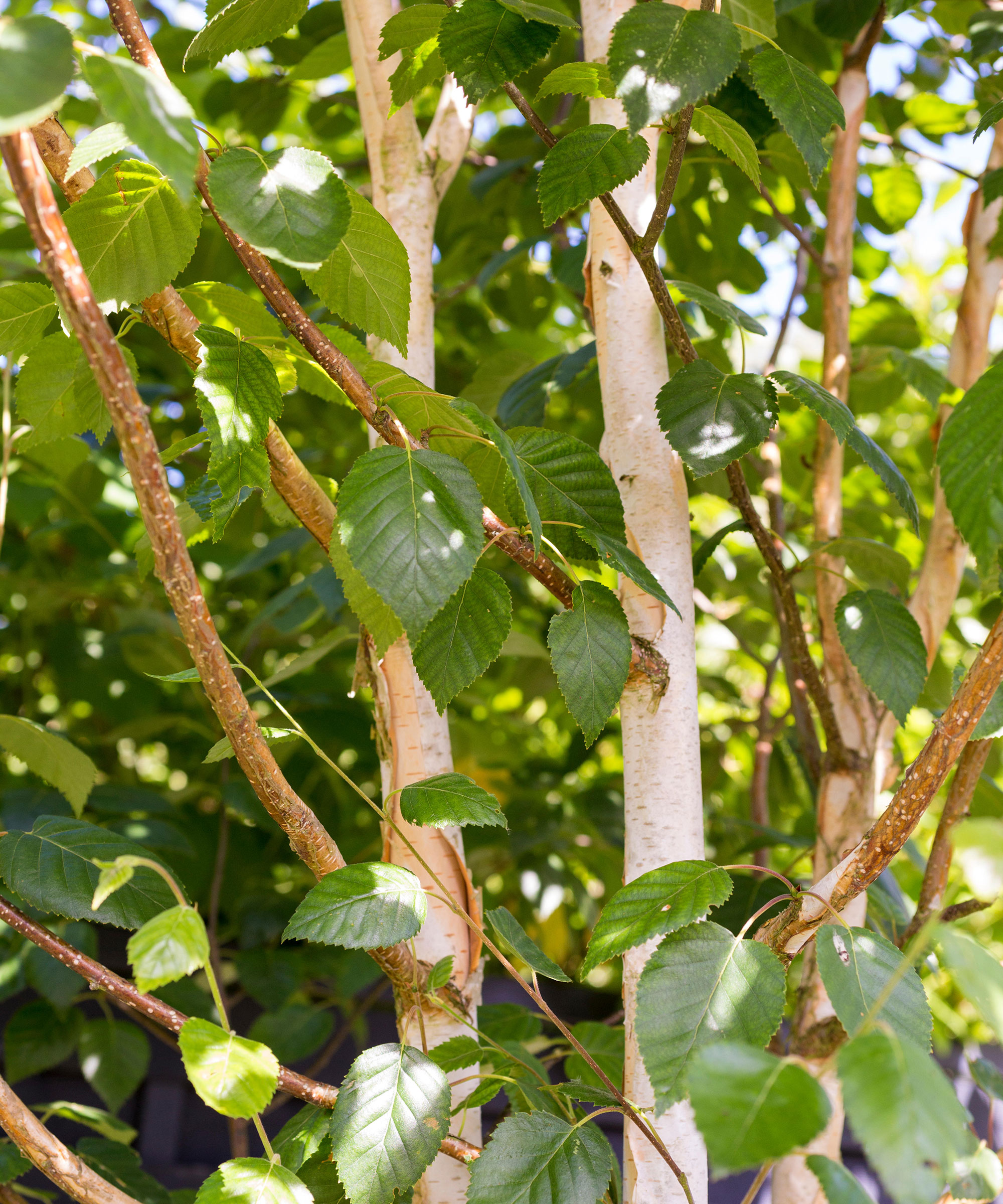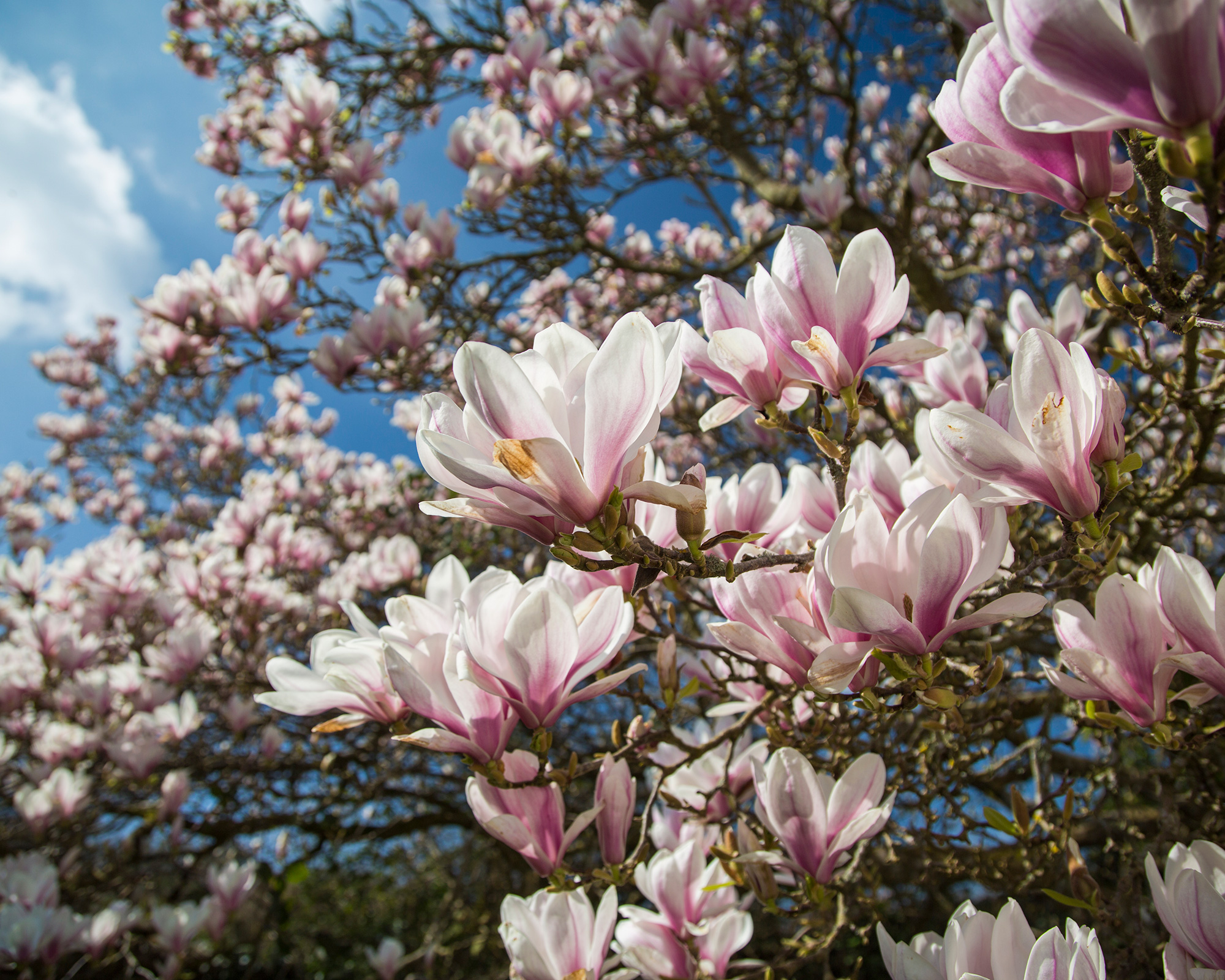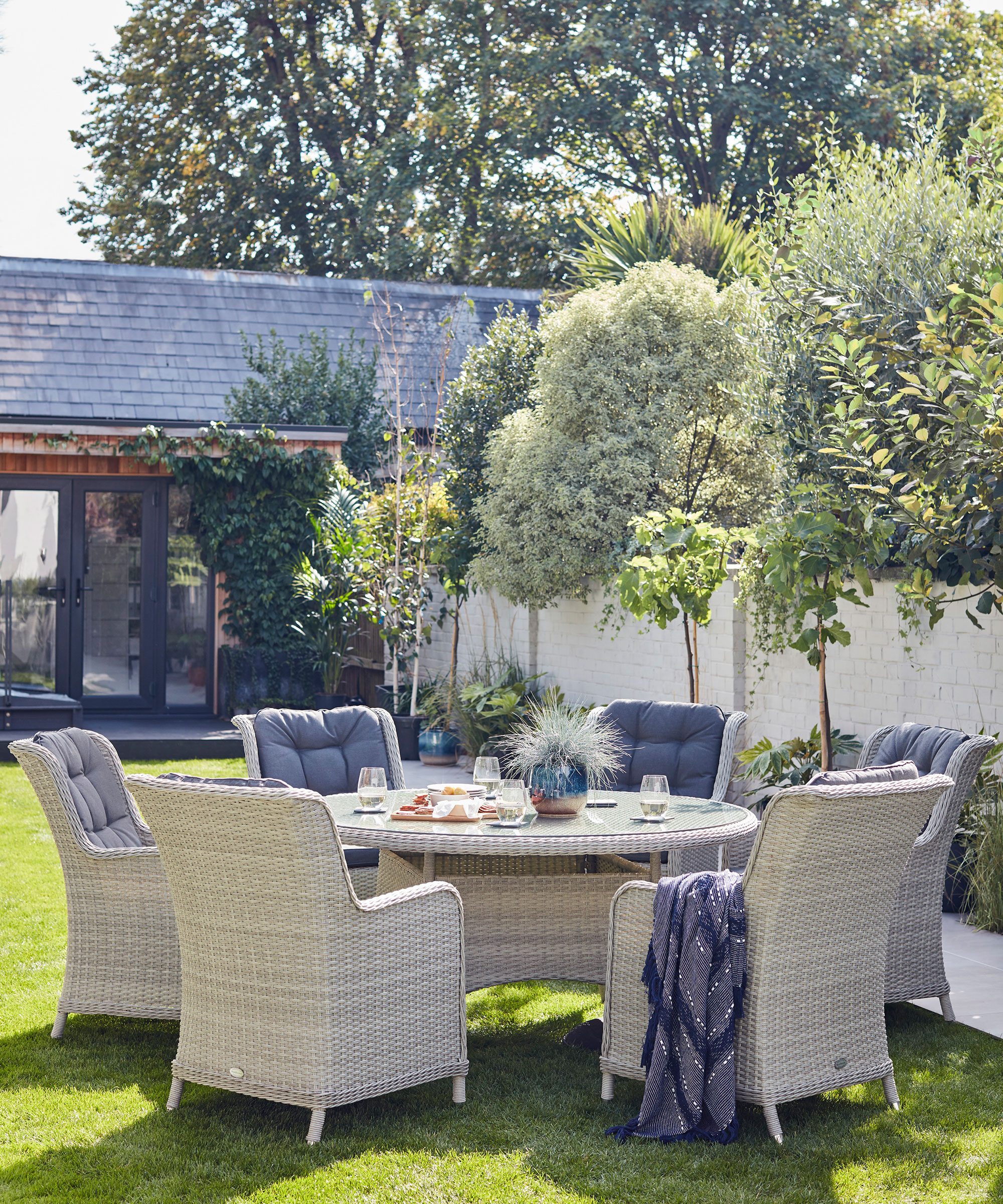Best low maintenance trees: 11 easy options for plots big and small
The best low maintenance trees will add structure and a focal point to your plot without demanding much of your time and attention


Choose the best low maintenance trees for your garden and you can add height, structure, shape and interest in one easy step. If you have never planted a tree before, the prospect of growing such a large and relatively expensive plant can be daunting. In reality, trees are often easier to look after and less needy than some of their smaller plant counterparts. So long as the ground is prepared before planting, and a suitable variety is chosen for the growing conditions, the most that some trees will demand from you is some water and an occasional trim in the winter.
Some trees are best avoided: they might have invasive root systems which can interfere with building foundations, perhaps they shed messy berries or nuts which require frequent clearing up if your garden is small or paved. Alternatively, the tree could be an extremely fast grower which requires regular or even professional trimming, which can be expensive.
Our recommendations are for tolerant, easy-care trees which will grow in a variety of soils, light conditions and climates. They are guaranteed to offer shelter, shade, privacy and a haven for wildlife which should last a lifetime. What's more, if you combine one of these with the best low maintenance plants in your beds and borders, you'll get to enjoy a beautiful plot that will virtually look after itself.
Add height to your plot with the best low maintenance trees
Whether you have an empty spot in your plot you want to fill or need to add some shade to a sun-drenched corner, the best low maintenanace trees will help you achieve all of that and more, plus they won't require you to spend loads of time looking after them.
1. Eucryphia nymansensis

Also known as the ‘brush bush,’ this tree offers year-round interest with evergreen foliage and large, scented cup-shaped white flowers in late summer to autumn. Grow it in partial shade or full sun in a sheltered spot. It is a good choice for larger low maintenance gardens, reaching an ultimate height of 39-49ft (12-15m). It will look after itself once it’s established, and only really requires a light trim in late winter.
2. Silver birch

The pure white bark of the birch tree is pretty in any season, but it comes into its own in the winter months, when it lights up the garden at the dullest time of the year. Better still, 'these trees are bullet proof,' says Michael Buck, nursery manager at Form Plants. He recommends the multi stemmed variety, such as Betula utilis jacquemontii ‘Snow Queen.’
Silver Birch will grow in sun or semi-shade in most types of well-drained soil. Once established, these trees need minimal care, and will withstand harsh winters.
They grow in hardiness zones 2-7 in the USA, and heat zones 1-7. For small gardens, try a single stem variety but always double check the ultimate height and spread before purchasing.
3. Ornamental Cherry

Cherry trees are an asset to any garden design idea. They are prized for their stunning spring blossom in a confetti of pink or white and some varieties are scented. There is plenty of choice in many sizes.
A compact option for the best low maintenance trees is the weeping Prunus yedoensis which reaches 10ft (3m) tall in 10 years. A small but stunning choice is Cherry ‘Pink Shell’ which has pastel pink flowers turning to white in April. Slightly larger, Prunus Incisa ‘The Bride’ is covered with single white flowers with a blushed centre from March to April. It grows to about 13ft (4m). Ornamental cherry trees like full sun with moist, well-drained soil of any type.
4. Cornus

Not to be confused with cornus shrubs, cornus or dogwood trees are prized for their pretty flowers and ornamental berries. They will thrive in sun or part shade in all soil types. For a mass of white flowers, go for Cornus kousa chinensis ‘Schmetterling’. For pink flowers, try ‘Cherokee Daybreak’ with oval variegated leaves, or ‘Variegata.’
The dogwood is the state tree and flower of the US state of Virginia and it’s one of the USA’s most popular ornamental trees, as well as being a familiar sight in many UK gardens.
5. Amelanchier

This tree, also known as shadbush and June serviceberry, is often recommended by garden designers as one of the best low maintenance trees – and for very good reason.
In late April to May, it has clusters of incredibly pretty white star-shaped flowers on soft copper coloured foliage, instantly lighting up spring garden ideas. It is a slim tree, so it will suit smaller gardens too.
Amelanchier Lamarkii ‘Ballerina,’ grows no taller or wider than 13-16ft (4-5m). Though they look delicate, these hardy trees will cope with damp conditions and most soil types, although they do prefer clay or sandy soil. It is native to North America, and also grows well across the UK.
6. Chinese Redbud

Here is a small tree which punches above its weight, with dense clusters of rosy pink blossom in late spring before the large heart shaped leaves appear.
Try Cercis chinensis ‘Avondale’ for a compact tree, which would make a pretty focal point in a small garden. It won’t grow taller than 13ft (4m). It flowers in March/April. If space is really tight, it can be kept small with regular pruning – our guides to the best secateurs and the best loppers will help you find the right tools for the job.
It thrives in most soils, and is reasonably drought tolerant, once established. For the optimum number of flowers, plant in an open, sunny position with plenty of light. It is suitable for US hardiness zones 4-9.
There are plenty more options for the best trees for small gardens in our dedicated guide too.
7. Crab Apple

With a froth of the prettiest blossom in spring, these trees are a rich source of nectar and pollen for insects, and they add appeal to any garden. There are many different varieties and the heights vary, so check carefully before buying.
Smaller ones include malus ‘Butterball’ and malus ‘Wisley Crab’ which can reach about 13ft (4m). A larger variety, growing up to 26ft (8m) is malus ‘Royalty,’ or go for malus x Zumi ‘Golden Hornet’, which bears masses of tiny yellow fruits.
Plant these in full sun, in moist but not wet soil, then there is very little maintenance needed. In winter, simply remove any damaged branches, or ones that cross over each other.
8. Acer

Acers, or maples as they are also known, do need a little more care than some of the other low maintenance trees on our list, but if they are planted in the ground, rather than in a pot, then they are a laid back and joyful addition to the garden, offering fireworks of autumn color with their beautifully shaped leaves.
'Maples in the ground will look after themselves,' advises expert grower Neil Kenney, author of An Illustrated Guide to Japanese Maples. 'They have a surface root system, so in dry weather, they will need watering and mulching (to retain moisture).'
These slow-growers will never overwhelm the garden, meaning they are a great one to include in any low maintenance garden border ideas. There are many varieties to choose from if you're keen to learn how to grow acers. Try A.palmatum ‘Bloodgood’ – the leaves will turn from dark red to a searing crimson in autumn.
9. Olive

If you live in a reasonably warm region, trees don’t get much easier to look after than an elegant olive. They are slow growing with attractive silvery, sage-coloured foliage which is evergreen.
There are a few essential care tips. If you are growing an olive tree in a garden planter, it will need watering weekly in hot dry periods in summer, and it’s a good idea to give it a feed in spring with a granular fertiliser.
If temperatures drop to below 10˚F (-12˚C) for long periods in your region or state, the olive tree will need to be over-wintered inside. But in sheltered gardens, when it’s likely to drop below 14˚F (-10˚C), throwing a horticultural fleece coat over the tree should be enough to keep it from frost damage.
There's more options for the best trees to grow in pots in our dedicated guide, too.
10. Crape Myrtle

This showstopper of a tree is a stunning addition to our list of the best low maintenance trees. It is better known in the USA than the UK, but it can be grown in both countries. Also known as lagerstroemia, it delivers year-round interest with gorgeous crinkly edged flowers in white, purple or violet in summer, followed by yellow, gold and orange foliage in autumn and then pretty peeling grey/orange bark in the winter months.
It will need planting in a sunny spot, and requires regular watering until it has bedded in. Certain varieties cope better than others with cold weather. The ‘Indiya Charms’ collection offer hardier varieties, but when a harsh frost is forecast, it is still a good idea to pop over a horticultural fleece. There’s no pruning needed, just plant and let it grow. It is suitable for US plant hardiness zones 7 and above.
11. Magnolia

Perfect for a sheltered spot, these are easy-going trees, provided they are planted in the right place and in suitable soil. Magnolias can be evergreen or deciduous trees, and there are many varieties to choose from, but they all have stunning, large tulip-shaped or starry flowers which create a focal point.
If your garden has fertile, well-drained clay or acidic soil (find out more about soil types in our guide) and it’s not situated in a frost pocket, the magnolia is a brilliant choice (frost will discolor the blossom). They need a very light trim in mid-summer to early autumn, just enough to remove any dead or diseased branches, and benefit from a mulch in spring.
Like all of the best low maintenance trees on our list, magnolias should be well watered after planting. Then it’s just a matter of sitting back and waiting for the floral spectacle.
How do I choose the right low maintenance tree for my garden?
Trees are an investment, so it’s important to pick one that’s going to thrive as part of your low maintenance landscaping plans. Before you make a final decision, it's worth seeking some additional advice from the experts. 'A specialist tree supplier or nursery will give you all the information you need,' says Michael Buck of Form Plants. 'You may be able to book a site visit, so they can assess the soil in your garden before advising you on what to plant.'
If this is not possible, when you go tree shopping, take along some photos of your garden showing the proposed site for your tree, including the distance from your house. It can also worth doing this if you're shopping for the best low maintenance shrubs too, as it will help your supplier advise on the right option for your space.

How can I help a tree to establish strong roots?
'People can be put off by the idea of planting trees, but the majority are low maintenance if you look after the roots,' says Michael Buck from Form Plants. 'This is straightforward to do. Before you buy or plant a tree, take time to prepare the soil, digging in some organic matter and doing everything you can to enhance what’s already there.'
Organic matter means homemade or bought compost or well-rotted manure. This helps to improve soil structure which leads to healthier plants. We've got plenty of tips on composting in our dedicated guide if you want to learn how to make your own at home.
On poor soil, a sprinkle of mycorrhizal fungi will also help the tree to establish strong, healthy roots.

Do I need to water my tree?
Yes, young or newly planted trees should be watered every couple of weeks for about two years after planting. Freshly planted trees have not yet developed a strong root system, so they cannot store much water, which is why they need a regular dose. This is particularly important if you're planting bare root trees too.
Try to water early or late in the day, so the liquid does not evaporate. Use a garden hose or a bucket, and if the tree is in a pot, go slowly, so that the water soaks in thoroughly, rather than running off.
According to the Tree Council even mature trees should be watered three times a month from April to September. Its advice says: 'Concentrate on watering under the canopy of the tree as this is likely to be where the roots are.'

An experienced freelance journalist, editor and columnist writing for national magazines and websites, Fiona now specialises in gardens. She enjoys finding and writing about all kinds, from the tiniest town plots to impressively designed ones in grand country houses.
